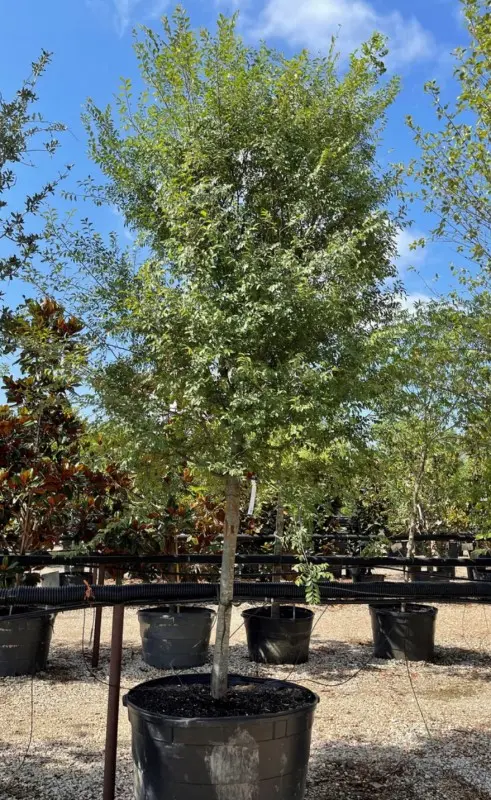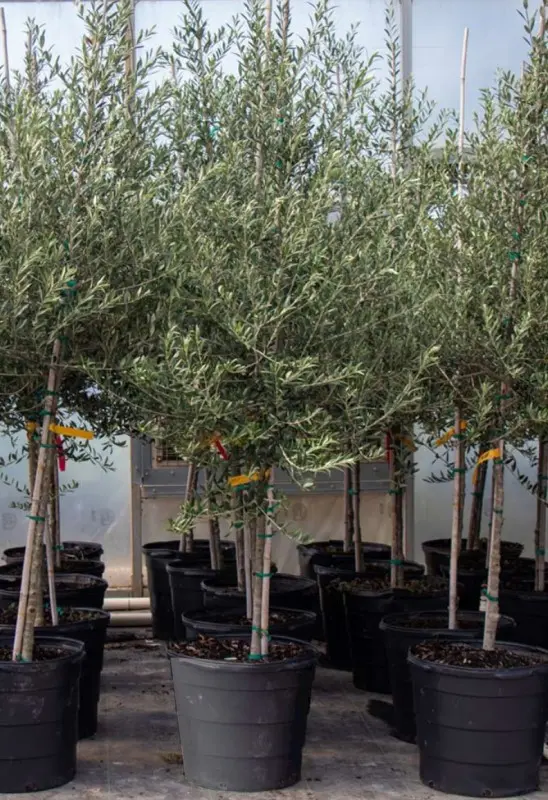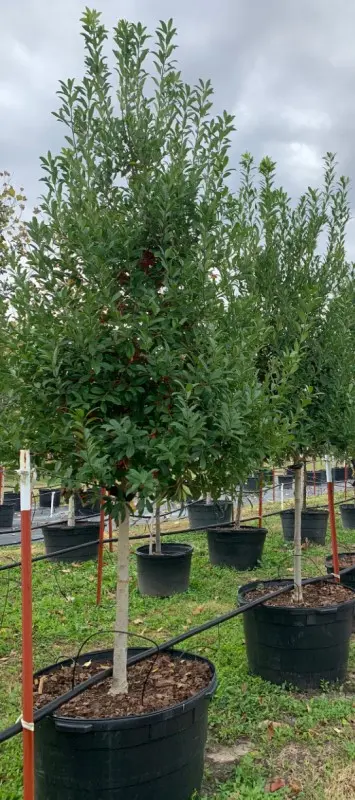-

Elm Tree
$0.00
Deciduous (loose leave in winter)
Grows up to 24" per year
Up to 35'
Elm Tree (Ulmus spp.) is a large, deciduous tree admired for its graceful, vase-like shape, broad canopy, and resilience in urban and rural landscapes. Native to Europe, Asia, and North America, elms are known for their broad, serrated, dark green leaves that turn golden yellow in the fall, providing seasonal color and shade. The tree's mature bark is rugged and deeply fissured, adding texture and character to the landscape. Common varieties include the American Elm (Ulmus americana), the Chinese Elm (Ulmus parvifolia), and the English Elm (Ulmus procera).
Elms typically grow between 60 and 80 feet tall, with a spread of 40 to 70 feet, creating a broad, arching canopy that provides ample shade. They thrive in USDA zones 4-9, depending on the species, and adapt well to a variety of soil types, including clay, loamy, and sandy soils. Elms are best planted in full sun to partial shade and benefit from well-draining, moderately fertile soil, though they are moderately drought-tolerant once established. Known for their versatility, elms are often planted as shade trees in parks, along streets, and in large residential landscapes.
In recent years, elms have been bred for increased disease resistance, especially against Dutch Elm Disease, which affected many native elms in North America. Low-maintenance overall, elms require occasional pruning to remove dead or damaged branches and maintain airflow through the canopy. With their expansive, arching forms, vibrant fall colors, and adaptability, elm trees are a timeless choice for adding shade, beauty, and structure to diverse landscapes.
-

American Sycamore
$0.00
Deciduous (loose leaves in winter)
Up to 70'
Grows up to 24" per year
-
American Sycamore (Platanus occidentalis), also known as American Planetree or Eastern Sycamore, is a large, deciduous tree celebrated for its distinctive, peeling bark and broad, maple-like leaves. Native to the eastern United States, the American Sycamore can grow to impressive heights, often reaching 75 to 100 feet tall with a spread of 50 to 70 feet. Its bark sheds in patches, creating a mottled appearance with colors ranging from creamy white to gray and tan, which gives the trunk a striking, almost camouflaged look. This tree’s large, lobed leaves turn yellow-brown in the fall, adding seasonal interest.
The American Sycamore thrives in USDA zones 4-9 and prefers full sun, although it can tolerate some light shade. It naturally grows along riverbanks, floodplains, and other areas with moist, rich soils, but it is also adaptable to various soil types, including clay and loam, and can withstand occasional drought once established. This tree is notably resilient and has a fast growth rate, making it a popular choice for large landscapes, parks, and open spaces where its size can be appreciated.
Low-maintenance and tolerant of urban conditions, American Sycamore requires minimal pruning, typically only to remove any dead or damaged branches. Due to its massive size, it is best suited to large properties and open areas, where it can provide ample shade and serve as a stately focal point. With its eye-catching bark, broad canopy, and tolerance of wet soils, American Sycamore adds both visual interest and ecological value to landscapes, providing shade, shelter, and beauty across diverse settings.
-

Olive Tree
$0.00
Evergreen
Slow growth rate
Up to 25'
-
Olive Tree (Olea europaea) is an evergreen tree native to the Mediterranean region, renowned for its silvery-green foliage, gnarled trunk, and edible fruit. Cultivated for thousands of years, Olive trees are highly valued for their olives and olive oil, as well as their ornamental beauty in landscapes. The tree’s narrow, elongated leaves are dark green on top and silvery-gray underneath, creating a distinctive, shimmering appearance. Olive trees bloom in late spring, producing small, fragrant, creamy-white flowers that give way to green fruits, which ripen to a purplish-black or dark green in late summer or early fall.
Typically growing 20 to 30 feet tall and wide, Olive trees have a slow to moderate growth rate and can live for centuries, with many specimens displaying their signature twisting, gnarled trunks as they age. They thrive in USDA zones 8-11, preferring full sun and well-draining soil with a slightly alkaline pH. Olive trees are drought-tolerant once established and can withstand hot, dry climates as well as coastal conditions, making them ideal for Mediterranean and arid landscapes. While they are frost-sensitive, certain cold-hardy varieties can withstand brief dips in temperature, allowing them to grow in slightly cooler regions.
Low-maintenance and relatively pest-resistant, Olive trees require minimal pruning, typically in late winter to early spring, to shape or control size. They are often used as specimen trees, in groves, or in pots, bringing a classic, Mediterranean aesthetic to gardens, courtyards, and patios. With their elegant foliage, historical significance, and adaptability, Olive trees add both functional and ornamental value, creating a timeless look in landscapes that recalls the warmth and heritage of the Mediterranean.
-

Little Gem Magnolia
$0.00
Evergreen
Grows to 15'-20'
Less than 12" per year
-
Little Gem Magnolia (Magnolia grandiflora ‘Little Gem’) is a compact, evergreen variety of the Southern Magnolia known for its dense foliage, manageable size, and striking, fragrant white flowers. This tree has glossy, dark green leaves with velvety, bronze-brown undersides that add texture and contrast. Blooming from late spring through summer, Little Gem Magnolia produces large, creamy white flowers—up to 8 inches wide—with a strong, sweet fragrance that attracts pollinators.
Little Gem Magnolia typically grows to a height of 15 to 20 feet with a spread of 7 to 10 feet, making it ideal for smaller landscapes or as an accent tree. This variety thrives in USDA zones 7-9 and prefers full sun to partial shade. It performs best in well-draining, slightly acidic soil but is adaptable to various soil conditions, including loamy, sandy, or clay soils. Once established, it is moderately drought-tolerant and handles hot, humid climates well.
Low-maintenance and slow-growing, Little Gem Magnolia requires minimal pruning to maintain its naturally compact, upright form. It can be pruned in late winter to control height or shape if desired. The tree’s narrow, columnar shape makes it suitable for smaller gardens, as a privacy screen, or as a vertical accent. With its year-round greenery, elegant flowers, and tolerance for confined spaces, Little Gem Magnolia offers the beauty of a traditional Southern Magnolia in a space-saving size, perfect for modern landscapes.






